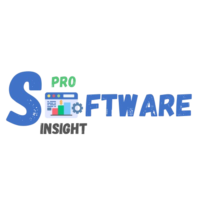How Manufacturing Software is Transfoarming the Industry

Table of Contents:
Intro
What is Manufacturing Software?
Types of Manufacturing Software
How Manufacturing Software is Transforming the Industry
Real-World Examples of Success
Challenges and Solutions in Implementation
Future Trends in Manufacturing Software
Actionable Insights for Businesses
Conclusion
The manufacturing industry has entered a new era, driven by digital innovation and technological advancements. Manufacturing software is at the heart of this transformation, helping businesses streamline operations, enhance productivity, and remain competitive in a fast-paced global market. Let’s explore how this technology is reshaping the industry and what it means for businesses of all sizes.
What is Manufacturing Software?
Manufacturing software refers to digital tools designed to manage, optimize, and automate processes in production and related operations. These solutions cater to a variety of needs, from planning and quality control to supply chain management and data analysis. By integrating these tools, manufacturers can achieve greater efficiency, minimize errors, and enhance decision-making.
Types of Manufacturing Software
Several types of manufacturing software serve specific purposes:
- Enterprise Resource Planning (ERP): Centralizes data across departments, including production, finance, and inventory, to provide a unified view of operations.
- Manufacturing Execution Systems (MES): Tracks and monitors real-time production processes to improve efficiency.
- Computer-Aided Design (CAD): Facilitates detailed product designs and prototypes.
- Supply Chain Management (SCM): Streamlines logistics and ensures smooth coordination among suppliers, manufacturers, and distributors.
- Quality Management Systems (QMS): Focuses on maintaining and improving product quality through data-driven insights.
How Manufacturing Software is Transforming the Industry
- Enhanced Operational Efficiency
Automation is a game-changer in manufacturing. Tasks that previously required significant manual effort are now automated, reducing errors and saving time. Manufacturing Execution Systems (MES), for example, provide real-time data on production, enabling quick adjustments and minimizing downtime. ERP systems integrate different business functions, ensuring smoother workflows and better resource management. - Data-Driven Decision Making
With the help of manufacturing software, businesses can harness vast amounts of data to make informed decisions. Predictive analytics tools allow companies to anticipate market trends, optimize inventory levels, and identify potential bottlenecks before they become issues. This proactive approach leads to improved planning and better outcomes. - Improved Product Quality
Quality assurance is critical in manufacturing, and tools like Quality Management Systems (QMS) help maintain high standards. These systems monitor every stage of production, from raw material selection to final inspection, ensuring that products meet regulatory and customer requirements. Higher product quality translates to increased customer satisfaction and loyalty. - Cost Reduction
Manufacturing software helps identify inefficiencies and eliminate waste, leading to significant cost savings. By automating routine tasks, optimizing labor allocation, and reducing material waste, businesses can achieve better profitability. Moreover, supply chain management tools minimize delays and reduce transportation costs. - Sustainability and Green Practices
In an age where sustainability is a priority, manufacturing software is enabling greener practices. Energy management systems track energy consumption, while smart manufacturing techniques minimize material waste. By adopting eco-friendly strategies, businesses not only reduce their environmental impact but also attract environmentally conscious customers.
Real-World Examples of Success
- General Electric (GE): GE adopted an advanced MES to streamline production lines, reducing cycle times and boosting efficiency.
- Tesla: The company leverages sophisticated manufacturing software to maintain high-quality standards while scaling production of electric vehicles.
- Boeing: Boeing uses CAD and ERP systems to design and manufacture aircraft with precision and efficiency.
Challenges and Solutions in Implementation
Adopting manufacturing software comes with its challenges, such as:
- High Initial Costs: Investing in advanced systems can be expensive. However, many software providers offer scalable solutions to fit different budgets.
- Workforce Training: Employees need proper training to utilize new systems effectively. Companies can address this by partnering with software vendors for onboarding support.
- Resistance to Change: Transitioning to digital tools may face internal resistance. Clear communication of benefits and gradual implementation can ease this process.
Future Trends in Manufacturing Software
The future of manufacturing software lies in integrating cutting-edge technologies:
- Artificial Intelligence (AI): Enables predictive maintenance and smarter decision-making.
- Internet of Things (IoT): Connects machines and devices for real-time communication and monitoring.
- Cloud Computing: Offers scalable, cost-effective solutions accessible from anywhere.
- Blockchain: Ensures secure and transparent supply chain operations.
Actionable Insights for Businesses
Assess Your Needs: Identify pain points and choose software that addresses them effectively.
- Start Small: Begin with scalable solutions and expand as your business grows.
- Invest in Training: Ensure your team is equipped with the skills to use the software.
- Partner with Experts: Work with software providers to ensure smooth implementation and ongoing support.
Conclusion
Manufacturing software is revolutionizing the industry, offering tools that enhance efficiency, improve quality, and reduce costs. By adopting these technologies, businesses can stay ahead of the curve, meet customer expectations, and contribute to a sustainable future. The time to embrace digital transformation is now.
